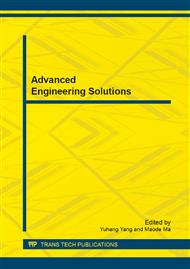p.790
p.794
p.799
p.805
p.811
p.815
p.819
p.823
p.827
Transformation Mechanism of Nitrobenzene in Groundwater and Soil and its Simulation and Forecast
Abstract:
Through indoor simulation experiment, this paper determines the main factors influenced the migration and transformation in aquifer, and calculate the influence degree of these factors by analytic method. Research shows that the adsorption capacity of nitrobenzene in silt medium greater than in sand medium, the block coefficient of silt medium was 2.22, block coefficient and sand medium was 1.74. Based on the first-order kinetic equation, respective of silt medium natural decay rate constant is 0.0644/h, sand medium natural decay rate constant is 0.0056/h.
Info:
Periodical:
Pages:
811-814
Citation:
Online since:
July 2014
Authors:
Keywords:
Price:
Сopyright:
© 2014 Trans Tech Publications Ltd. All Rights Reserved
Share:
Citation:


